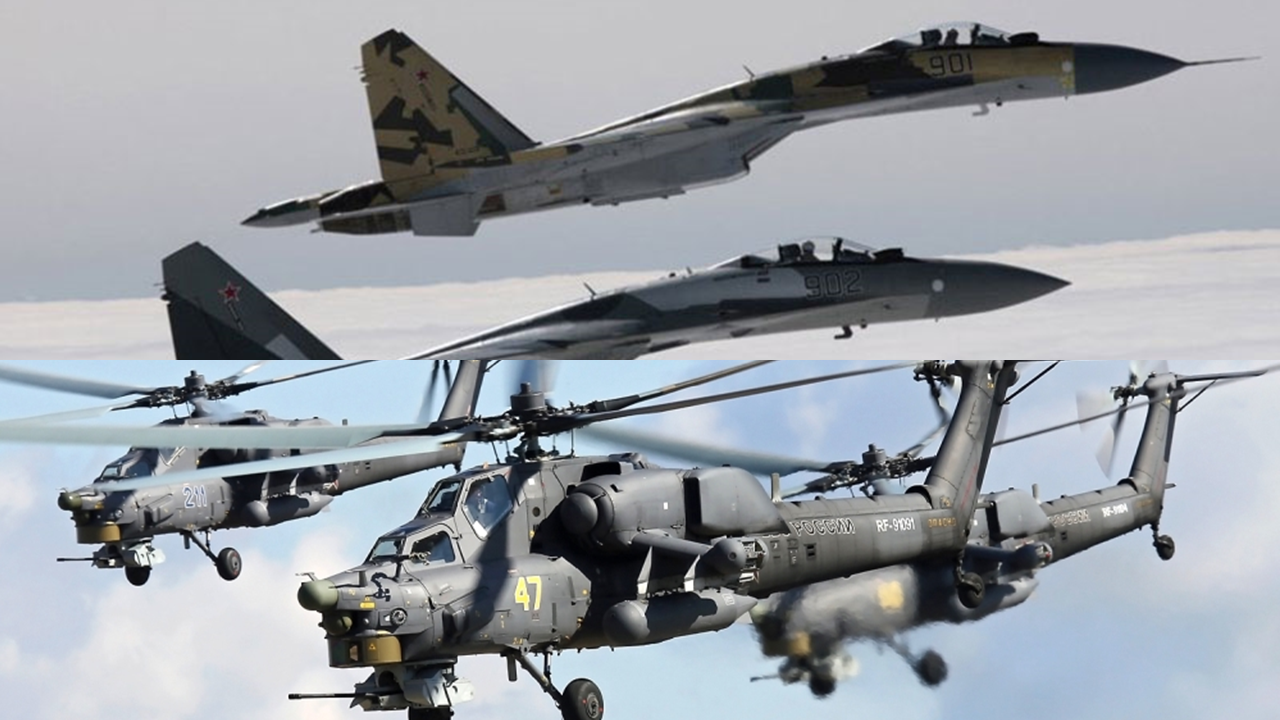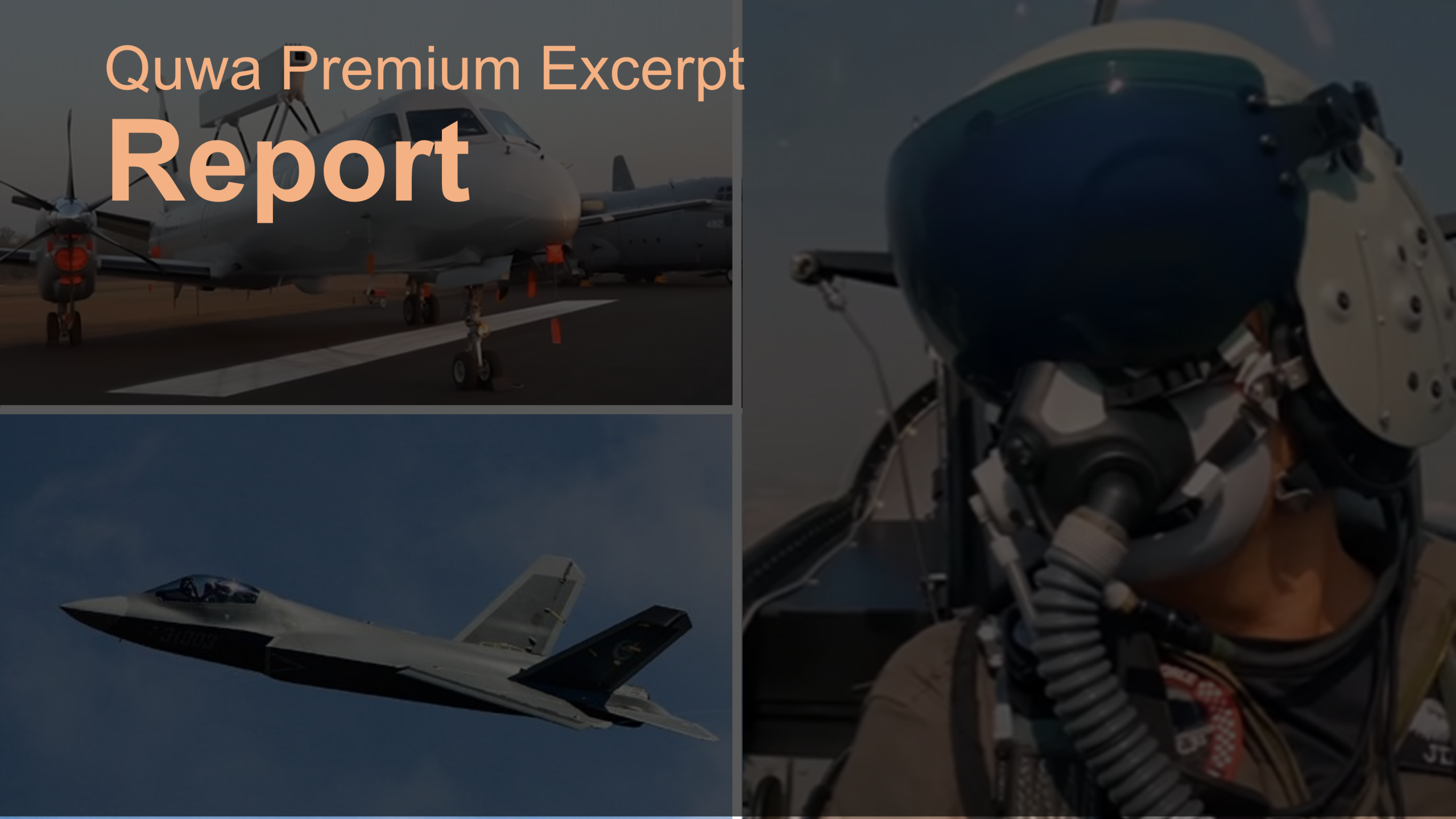According to several recent news reports, Pakistan is in active talks with Russia for the acquisition of Su-35 multi-role fighters and Mi-28NE dedicated attack helicopters.
The Pakistan Air Force (PAF)’s purported interest in the Su-35 Flanker-E is not a new story. In fact, several reports, including one from IHS Jane’s no less, pegged PAF interest in the latest Flanker variant in September last year. Now six months later, it seems that the Russian daily Kommersant was able acquire specific details about what may have been talks between Russia and Pakistan.
In short, the PAF may seek up to six Su-35s for around $500 million U.S. To the observer, that is certainly a very small number, especially for an air force as large as the PAF. Based on the Kommersant report, fiscal constraints on Pakistan’s side will prevent it from committing to a large number of aircraft.
Normally, Pakistan would engage in big-ticket arms purchases through the use of term financing or line of credits extended by the vendor. Given Russia’s economic precariousness and the sensitivities surrounding its ties with India, it is evident that Pakistan was not able to secure such support, hence it would need to pay for its purchases upfront with cold hard cash.
Like the Army’s Mi-35 purchase, the PAF may simply be looking to procure the Su-35s based on funding from existing budget allotments. As long as the Su-35 remains in production, the PAF could simply add to its fleet through regular small-batch purchases. In other words, it would not stick to just flying six aircraft; rather, it could build respectable fleet over the long-term. This is what the Army is intending to do with the Mi-35 – acquire four in the short-term, gradually build a fleet of 20 over the long-term.
So, why is the PAF apparently looking at the Su-35? What could it hope to achieve with such a few aircraft? When answering these questions, it is important to understand that any purchase of Su-35s would not be done with the aim of building a large Flanker fleet. Rather, it would be done to address specific gaps and to pursue certain capabilities that are not currently present.
For example, the long-range nature of the Su-35 may be attractive to the PAF in terms of its desire to build-up its maritime aviation capabilities, which are of vital use to the Navy. On the other hand, the Flanker-E’s massive payload capacity of 8000 kg may be enticing from the standpoint of acquiring a much more effective stand-off strike platform – i.e. a truck for multiple air-launched cruise missiles, anti-ship missiles, glide-bombs with high-explosive warheads, etc.
If equipped with a sufficiently powerful radar, the Flanker-E could even serve as a “mini-AEW” [airborne early warning] platform, enabling the PAFs JF-17s to use the Flanker’s superior sensor output (via data-link) to acquire an enhanced situational awareness of a combat zone.
Finally, there may even be a value in having the Flanker-E available on-demand for dissimilar air combat training (DACT), enabling PAF F-16 and JF-17 pilots to better understand the Indian Air Force’s mainstay fighter, the Su-30MKI and Super Sukhoi.
While certainly not easy to operate and cost-effective to maintain, the far reaching gains of possessing the Su-35 Flanker-E could outweigh the costs. However, it is important to manage expectations, especially as the PAF has not officially said anything on the matter.
In tandem to the Su-35 news, a Pakistani diplomatic source apparently told IHS Jane’s that the Pakistan Army is now actively interested in acquiring the Mi-28NE Night Hunter dedicated attack helicopter. A previous article on Quwa recommended that the Pakistan Army adopt the CAIC Z-10, hence it is unclear exactly what utility the Army is trying to extract from a possible Mi-28NE purchase.
According to Jane’s, the Army’s interest in the Mi-28NE was triggered when the Mi-28NE dual-control version entered production at the beginning of this year. This new Mi-28NE variant is not only capable of enabling both of its aircrew to operate the aircraft, but it also features enhanced ballistic protection. It is plausible to suggest that the Army is interested in acquiring the Mi-28NE from the angle of possessing a heavyweight attack helicopter akin to the AH-64D Longbow or AH-64E Guardian. In this case, the Army would have a platform with significant payload capacity and ballistic durability, which in turn equates to a suitable offensive asset for use in intensive operations (e.g. anti-armour).
However incremental the initial PAF and/or Army orders would be, to see Russia engage in such dealings would be an interesting shift, one that India will not take lightly. It would be in Pakistan’s hope to see Russia treat its defence relationships with India and Pakistan independently of one another, though it is unlikely India would tolerate such an arrangement, and will try to exert its influence to thwart Pakistan’s plans (if those plans are indeed genuine). Pakistani defence planners will need to consider this issue as well, especially if they begin weighing big-ticket arms purchases from Moscow.




